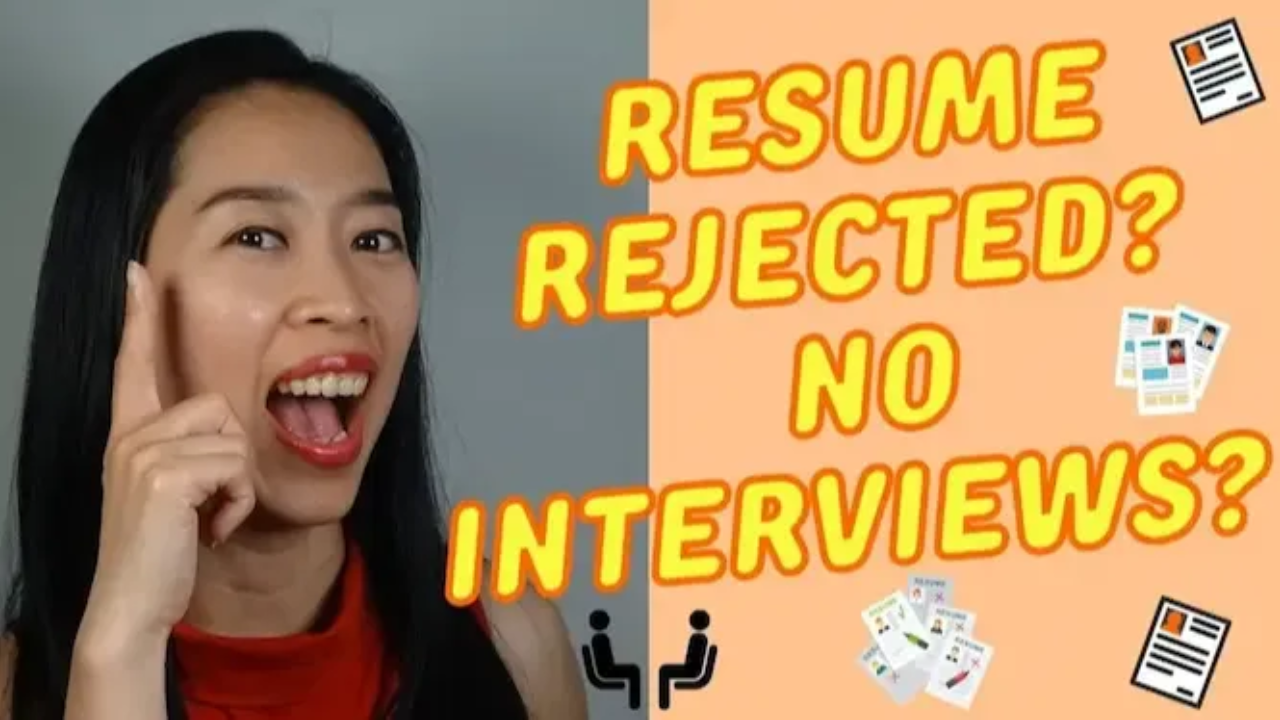Why My Resume Is Getting Rejected: 5 Fixes to Get More Interviews

If you’ve been sending out applications and hearing nothing back, you’re not alone.
Many international students and migrants spend hours perfecting their resumes — only to get rejection emails or complete silence. It’s frustrating, confusing, and it can make you question your skills.
But here’s the good news: there are usually very specific, fixable reasons your resume isn’t getting interviews. In this guide, I’ll walk you through five common resume mistakes — and show you exactly how to fix them so you start getting noticed.
1. Your Resume Isn’t Tailored to the Job
One of the biggest mistakes I see? Using the same resume for every job.
You might think you’re saving time, but what you’re really doing is lowering your chances.
Why it hurts your chances:
Every role — even with the same job title — requires a slightly different mix of skills and experience. Employers want to see that you’ve read their job ad and understand exactly what they need.
How to fix it:
- Mirror the language in the job ad.
- Add keywords from the ad into your summary and work experience.
- Prioritise skills they’ve listed as “must have” rather than including everything you’ve ever done.
It’s better to send 10 well-targeted applications than 100 generic ones.
2. You’re Focusing on Responsibilities, Not Results
Recruiters aren’t just looking for what you were “responsible for” — they want to know what you actually achieved.
Why it hurts your chances:
Listing only responsibilities makes you blend in with every other applicant who’s done the same tasks. Achievements are what make you stand out.
How to fix it:
- Start each bullet with an action verb.
- End with a measurable result or impact.
- For example: “Reduced delivery time by 20% by streamlining the order process.”
- Even if you’re a graduate, you can highlight achievements from internships, projects, or part-time roles.
Remember: results speak louder than duties.
3. Your Resume Is Too Long or Too Cluttered
I’ve seen resumes that are five or six pages long — sometimes from fresh graduates. This is a fast way to lose a recruiter’s interest.
Why it hurts your chances:
Recruiters spend an average of 6 seconds skimming a resume. If yours looks overwhelming, they won’t read it.
How to fix it:
- Keep it to one page if you’re early in your career, or two pages if you have 5–10 years’ experience.
- Remove irrelevant jobs (like casual hospitality or delivery work) unless they build relevant transferable skills.
- Avoid unnecessary sections like “Hobbies” — they don’t help you get the job.
The goal is to make your resume easy to scan and immediately relevant.
4. You’re Listing Too Many Soft Skills
Many job seekers copy phrases like “team player,” “passionate,” or “hard-working” straight from the job ad.
Why it hurts your chances:
Soft skills are valuable, but they’re hard to prove on paper — and recruiters are used to seeing unsubstantiated claims. This can make your resume feel generic.
How to fix it:
- Focus on technical skills and hard skills that are directly measurable (e.g., software proficiency, industry-specific tools, data analysis).
- If you want to include soft skills, back them up with an example:
“Led a team of 5 to deliver a project two weeks early” proves leadership and teamwork.
Hiring managers want to see that you can do the job — and hard skills make that clear.
5. You’re Adding a Photo
This is still surprisingly common — but unnecessary for most professional roles in Australia.
Why it hurts your chances:
- Applicant Tracking Systems (ATS) often can’t process images, meaning your resume might be rejected before a human even sees it.
- Photos can create unconscious bias — positive or negative — which has nothing to do with your ability to do the job.
- Poor-quality or casual photos can make you look unprofessional.
How to fix it:
Leave the photo off entirely. Use that space for another achievement or skill that helps you get shortlisted.
Bringing It All Together
If your resume isn’t getting results, it’s rarely about your worth as a candidate — it’s about presentation and relevance.
Here’s your quick action checklist:
- Tailor your resume to each job
- Highlight measurable achievements
- Keep it short and easy to read
- Focus on hard skills, back up soft skills with proof
- Skip the photo
With these changes, you’ll give recruiters exactly what they need to see — fast — and dramatically improve your chances of landing interviews.
Want a Resume Template That Fixes All of This for You?
Download the Skilled Job Starter Kit — built for international students and migrants who want to land skilled jobs faster.
Inside, you’ll get:
- A proven ATS-friendly resume template that gets interviews
- A checklist of common resume mistakes to avoid
- LinkedIn and interview tips to boost your job search
👉 Get it free here: https://www.theaho.co/free
FAQs
Why is my resume getting rejected with no interview?
Common reasons include generic content, no measurable results, poor formatting, missing keywords, or including information that isn’t relevant to the job.
How can I fix my resume to get more interviews?
Tailor it to each job, focus on results, keep it concise, and ensure it’s ATS-friendly.
What if I don’t have local experience?
Highlight transferable skills from previous roles, internships, and volunteer work. Show employers how your skills apply to their needs.


